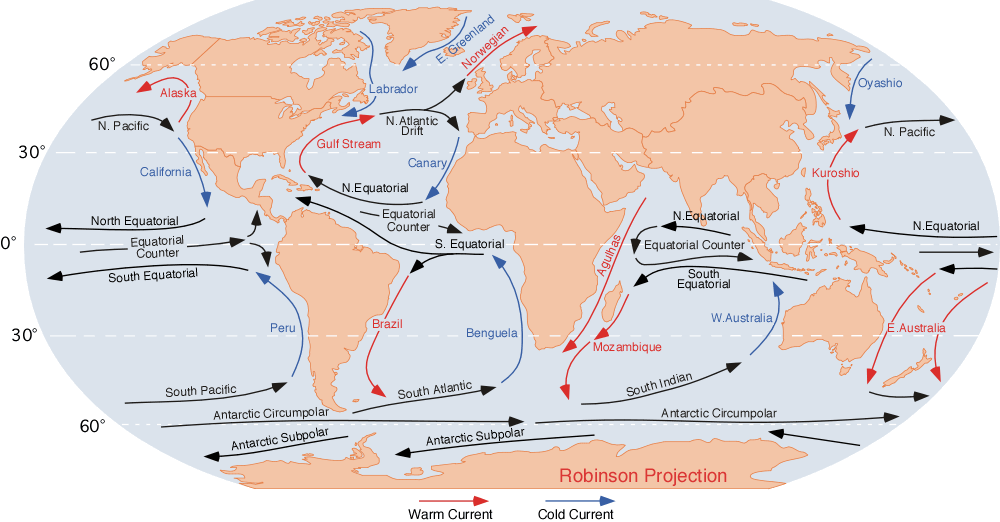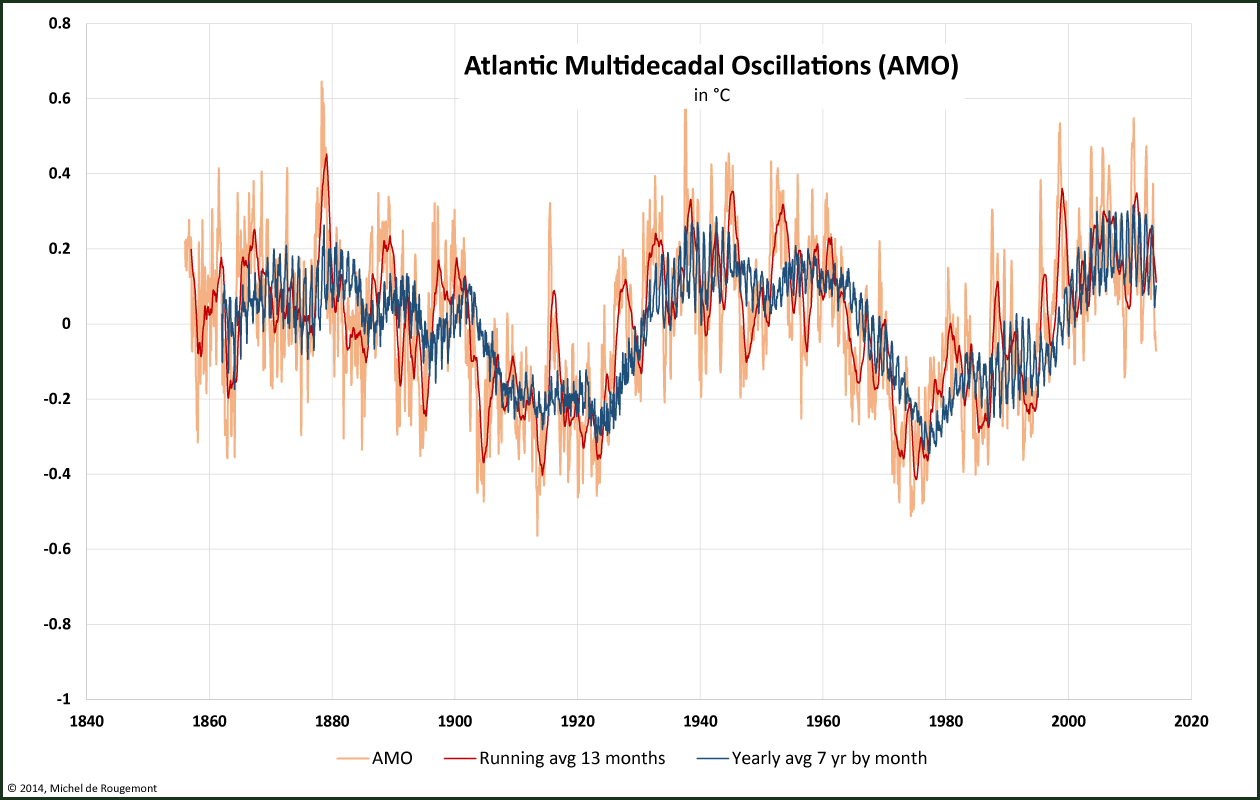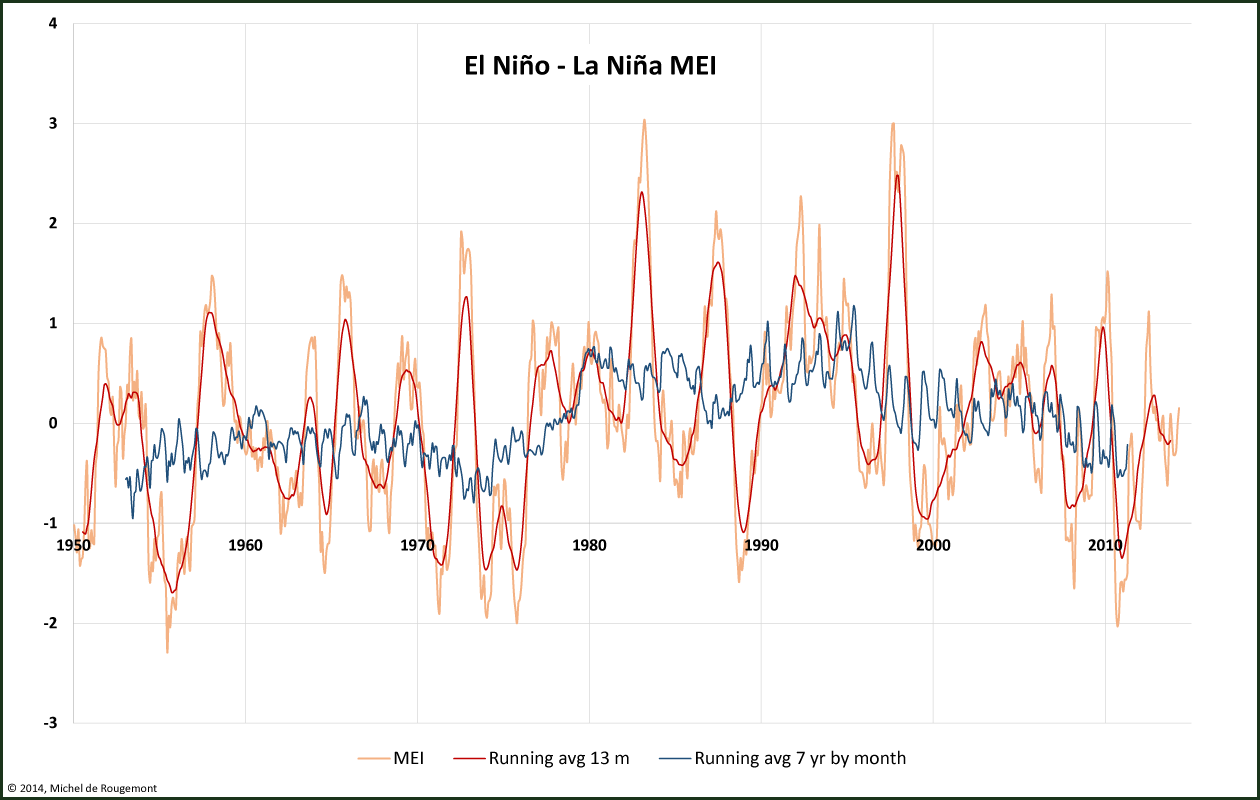According to the Potsdam Institute for Climate Impact Research, ocean currents have remained steady since the last glaciation period.

Oceanic currents, red arrows indicate warm currents, cold currents in blue.
Source: www.physicalgeography.net
Water masses having different temperatures and salinity, and thus various densities, are transported over long distances, and also vertically.
Cyclic patterns can be observed:

Atlantic Multidecadal Oscillation. Monthly averages of surface water temperature anomalies.
Source: www.esrl.noaa.gov/psd/data/timeseriesimeseries/AMO/
In the Pacific, the El Niño – la Niña phenomena have a shorter time period, or their observation is lacking sufficient time to get a wider picture.

Multivariate El Niño/Southern Oscillation (ENSO) index.
This index is based on six variables: sea-level pressure (P), zonal (U) and meridional (V) components of the surface wind, sea surface temperature (S), surface air temperature (A), and total cloudiness fraction of the sky (C).
Source: www.esrl.noaa.gov/psd/data/correlation/mei.data
The causes of such currents and thermal variations are complex; however, it may suffice to know that they exist and have an impact on regional climates.


